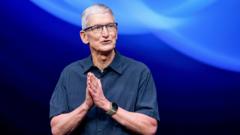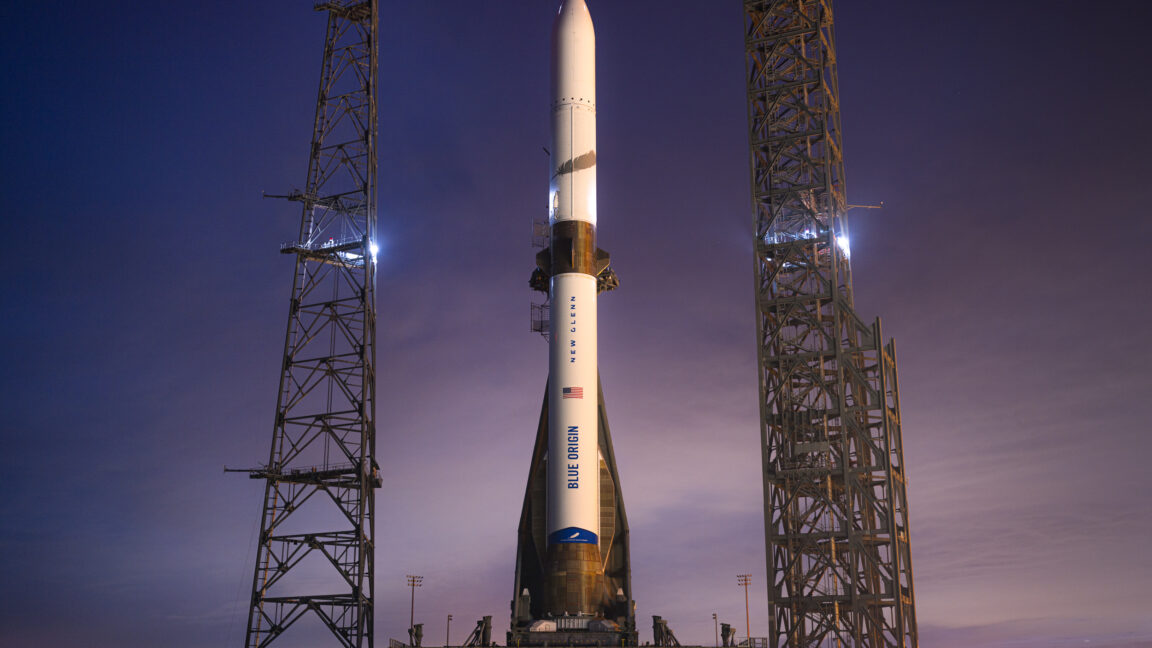ChatGPT creator denies sister's childhood rape claim


Groww, India’s largest retail stockbroker, is preparing to file for an IPO in 10 to 12 months, seeking a valuation between $6 billion and $8 billion, sources familiar with the matter told TechCrunch. The Bengaluru-headquartered’s listing would be the first IPO by a digital trading platform in India. The targeted valuation is more than double […]
© 2024 TechCrunch. All rights reserved. For personal use only.
In the age of social media-driven, viral trends, brands often look to platforms like TikTok to strike gold with the algorithm and reach a massive audience. As social media fragmentation continues and the TikTok ban looms even nearer, the concept of virality may soon shift, making it an even less realistic goal than before.
Take Bogg Bag, the brightly colored, Croc-inspired tote bag that became one of the many “TikTok Made Me Buy It” products backed by influencers and content creators, setting it on the path to achieve $100 million in revenue last year, according to Bogg Bag founder and CEO Kim Vaccarella.
Last year, the bags were everywhere on social media. One video was posted back in May where a mom packing a Bogg Bag with daily essentials got 1.7 million likes. The post was in partnership with Bloom Nutrition, health supplement company, but mentioned Bogg in the caption. Another post featuring a healthcare worker sporting a Bogg Bag racked up more than 378,000 likes in January. In June, another nurse who accessorized the bag in an unsponsored post got nearly 98,000 likes.
Continue reading this article on digiday.com. Sign up for Digiday newsletters to get the latest on media, marketing and the future of TV.
Throughout 2024, several major brands announced they were creating their own brand studios that would soon roll out television shows and films. Marketers, it seems, have become more interested in creating entertainment rather than just advertising around it.
In February, luxury behemoth LVMH announced the creation of 22 Montaigne Entertainment in partnership with Superconnector Studios. In June, Starbucks touted its own burgeoning studio, Starbucks Studios, with the help of Sugar23. And in August, Chick-Fil-A revealed its plan for its own original programming focusing on reality TV. That’s just to name a few of the major brands that have been dipping more than a toe into entertainment to create their own studios.
Studios aren’t the only way brands are getting more involved in entertainment production either. In December, Sugar23 and production and distribution company Fifth Season kicked-off a three year venture to work with advertisers to co-finance $100 million of productions. That’s another one of the ways entertainment production companies are working with marketers. It all lays the groundwork for marketers to move beyond mostly creating advertising that interrupts programming people want to watch to (potentially) create that very entertainment.
Continue reading this article on digiday.com. Sign up for Digiday newsletters to get the latest on media, marketing and the future of TV.
This edition of Digiday’s daily CES Briefing looks at the need for brands to adopt SEO strategies for dealing with AI agents, an interview with Mastercard’s Raja Rajamannar about agency compensation models in the AI era and how Dotdash Meredith has used OpenAI to boost its contextual ad product D/Cipher.
Expect to hear a lot about search engine optimization in 2025. Except it won’t be called that.
“It’s no longer about search engine optimization. It’s about answer engines,” said Digitas CEO Amy Lanzi.
Continue reading this article on digiday.com. Sign up for Digiday newsletters to get the latest on media, marketing and the future of TV.
Continue reading this article on digiday.com. Sign up for Digiday newsletters to get the latest on media, marketing and the future of TV.
Advertisers may still be standing by TikTok for now, but its execs are eyeing the door as the app’s U.S. future grows increasingly precarious.
Since the start of the year, two senior leaders from its ad team have already made their exit. Sameer Singh, general manager for global business solutions in North America, is reportedly leaving the platform, after three-and-a-half years of service. It’s understood he is available to support the transition for his team until the end of February. Days later, it was reported that Jack Bamberger, general manager of agency business for the region, had already left on Jan. 3, having only worked at TikTok since March 2024.
While they have not said publicly why they departed, the timing is hard to ignore — coming just days before the Supreme Court weighed in on a pivotal case that could determine the platform’s fate in the U.S. last week (Jan. 10). Neither Singh nor Bamberger responded to Digiday’s request for comment.
Continue reading this article on digiday.com. Sign up for Digiday newsletters to get the latest on media, marketing and the future of TV.
Shoppable TV ads powered by AI-powered visual search aren’t yet a household habit. However, one startup’s new partnerships with two major TV manufacturers are just one of the many ways AI was showcased in Las Vegas last week during CES 2025.
At CES 2025 last week, a startup called TheTake announced new deals with LG and Samsung, bringing its total footprint to more than 30 million devices. Founded a decade ago, TheTake uses visual AI to let users click on items within a show to see what it is, where to buy them, and view similar items. The on-screen display also shows both organic recommendations and ads from brands and retailers.
The goal is to take a “pull more than push” approach to product discovery and the ads around them, said TheTake founder and CEO Tyler Cooper. With LG, the expanded partnership includes a new “click to search” feature to identify the products, places, and people on-screen. With Samsung, the startup debuted a new way to browse and shop for products within content, along with updates for advertisers to reach high-intent audiences.
Continue reading this article on digiday.com. Sign up for Digiday newsletters to get the latest on media, marketing and the future of TV.
Once the U.S. presidential election was decided on Nov. 5, 2024, with former president Donald Trump defeating vice president Kamala Harris — an election that was certified only a week ago without attempts to overthrow the government, thankfully — there was little doubt the country’s mindset would shift somewhat rightward.
That shift took a decisive and intentional lurch rightward last week with Meta’s Mark Zuckerberg announcing he was dismantling the company’s fact-checking apparatus in favor of X’s approach to content moderation — community notes. The move, because it aligns with X owner Elon Musk, was largely interpreted as a means of currying favor with the incoming administration — which, it’s fair to say, Musk helped usher into power more than any single person or entity in the last year. Whether that’s true or not remains in the eye of the beholder.
This is a member-exclusive article from Digiday. Continue reading it on digiday.com and subscribe to continue reading content like this.


Blue Origin’s New Glenn rocket is ready for liftoff. After some weather-related delays over the weekend, the Jeff Bezos-owned space company said that the $2.5 billion reusable rocket, which has been in development for nearly 13 years, will target its first launch no earlier than Monday, January 13. Its three-hour launch window kicks off at 1AM ET. The webcast will begin an hour before launch, and you can watch New Glenn take flight on Blue Origin’s website, X or the company’s YouTube channel.
New Glenn’s inaugural mission (NG-1) will serve as its first Space Force national security certification flight, necessary to compete against the likes of SpaceX for Department of Defense and national intelligence contracts. Its reusable first stage is designed for at least 25 flights. Blue Origin has several New Glenn vehicles in production.
Blue Origin describes New Glenn as “our giant, reusable rocket built for bigger things.” The “giant” bit is apt: The rocket stands over 320 ft (98 m) high. As for its “bigger things,” that includes the metaphorical (like potential missions to Mars) and literal: It can carry over 45 metric tons to low Earth orbit (LEO) and 13 to geostationary transfer orbit (GTO). By comparison, rival SpaceX’s Falcon Heavy can lift nearly 64 metric tons to LEO and almost 27 to GTO orbit.
On its maiden voyage, New Glenn will carry a prototype of the company’s multipurpose Blue Ring Pathfinder. The craft is designed to transport, refuel and host satellites and other spacecraft and can carry three metric tons of cargo into space. Friday’s launch will test Blue Ring’s core flight / ground systems and operational capabilities.
After New Glenn lifts off from Launch Complex 36 in Cape Canaveral, its reusable first stage will land on a barge, “Jacklyn,” floating several hundred miles away in the Atlantic Ocean.
New Glenn, named after pioneering astronaut John Glenn, completed its first launch countdown dress rehearsal on December 27. After several countdown attempts over a few hours, the rocket’s seven BE-4 engines ignited and fired for 24 seconds (spending 13 seconds at 100 percent thrust), paving the way for Friday’s targeted launch. The rocket’s first flight was initially slated for October, carrying two Mars-bound NASA satellites, but the launch was scrapped because it wouldn’t be ready by then.
Update 1/13/2025 3:18AM ET: Due to a technical problem, today's scheduled launch has been scrubbed. "We’re standing down on today’s launch attempt to troubleshoot a vehicle subsystem issue that will take us beyond our launch window. We’re reviewing opportunities for our next launch attempt," Blue Origin wrote in a post on X.
This article originally appeared on Engadget at https://www.engadget.com/science/space/how-to-watch-blue-origins-inaugural-new-glenn-launch-013009830.html?src=rss©
© Blue Origin

MERRITT ISLAND, Florida—Understandably, the main building of Blue Origin's sprawling campus in Florida buzzed with activity on Sunday evening as the final hours ticked down toward the company's historic, first orbital launch. The time had come to celebrate a moment long awaited.
On one side of the large foyer, a multi-story print of the New Glenn rocket lit up on its launch pad hung from the wall. The striking image had been taken a day after Christmas, and put up in the lobby two days earlier. On the other side a massive replica of the company's "Mk. 1" lunar lander towered over caterers bustling through.
My escort and I took the elevators to the upper floor, where a walkway overlooks the factory where Blue Origin builds the first and second stages of its New Glenn rocket. There I met the chief executive of the company, Dave Limp, as well as the person responsible for all of this activity.


© Blue Origin
Around the world, public healthcare systems have struggled to reset post-pandemic, and in particular, the increasingly aged populations in Western countries are putting pressure on services, not least in the UK where ‘NHS in crisis’ is a regular headline in the media. As a result, private companies, many powered with technology, see a gap in […]
© 2024 TechCrunch. All rights reserved. For personal use only.